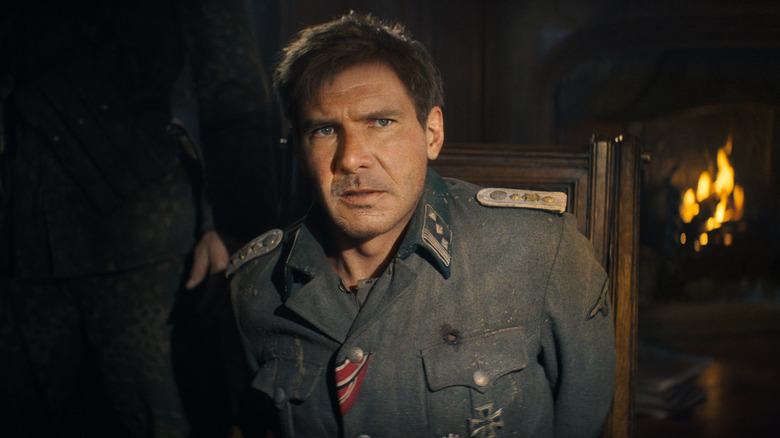Indiana Jones And The Dial Of Destiny's Timeline Explained
Warning: This article contains spoilers for "Indiana Jones and the Dial of Destiny."
"Indiana Jones and the Dial of Destiny" finally gives fans of the franchise the final pieces of the series' twisted timeline — though not before twisting once more toward the distant past.
The story begins in 1944, showing Harrison Ford's titular archaeological hero's time serving the United States military during the Second World War. The film then jumps ahead decades to its primary "present," which begins exactly on July 24th, 1969. Despite not being explicitly mentioned in the film, we can determine this date precisely via context clues — primarily that Dr. Jones wakes up to the commotion of the impending success of the Apollo 11 mission to the moon. "Dial of Destiny" spends the vast remainder of its runtime in the days that follow, with Indy and his new companions racing against the villainous Jürgen Voller (Mads Mikkelsen) for the eponymous MacGuffin.
At the start of the film's final act, however, as Voller attempts to drag the entire company back to 1939 in order to assassinate Adolf Hitler and create a power vacuum in the Nazi party, he mistakenly leads them to 214 BCE — specifically, sometime during the Siege of Syracuse. After several explosions, plane crashes, and historical fractures, Indy and his goddaughter, Helena (Phoebe Waller-Bridge) escape back to 1969.
All things considered, the timeline of "Dial of Destiny" is relatively straightforward, especially for what winds up being a time travel film. Where longtime fans may start to struggle is in trying to place the film's events in the already tangled history of the "Indiana Jones" franchise.
Where does Dial of Destiny fit in with the rest of the franchise?
To keep things as simple as possible, we're just going to deal with the five films theatrically released by Paramount and Disney with Ford in the title role. This means no novels, comic books, and — woefully — no "Young Indiana Jones Chronicles" (a TV series that holds up surprisingly well in 2023).
Indy's OSS days at the top of "Dial of Destiny" take place several years after "The Last Crusade," which is itself the most chronologically recent of the original three installments ("Temple of Doom" being the oldest). The next major point in the timeline would be "Indiana Jones and the Kingdom of the Crystal Skull," which took place in the late 1950s.
Sometime after the events of that film, Indy's son Mutt (played by Shia LaBeouf) defiantly enlists to fight in the Vietnam War. It's revealed in "Dial" that he was ultimately killed in combat, his death subsequently driving a devastating wedge between Jones and former flame Marion Ravenwood (Karen Allen). All told, there's roughly a decade between the fourth and fifth installments in the series, which almost lines up with the real-life distance between the films' respective releases. The year 1969 will ostensibly serve as the endpoint for the franchise, barring any spin-off TV shows or movies likely dependent on the film's box office performance.

